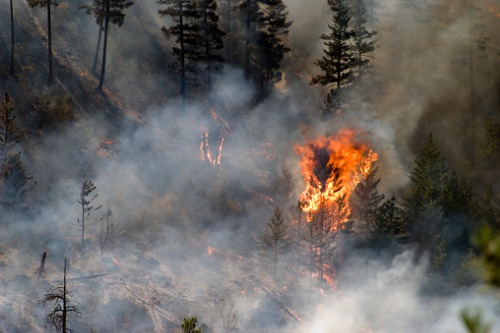

Last year’s wildfires broke records, and the destruction has been repeated again this year. California’s Insurance Commissioner Dave Jones announced on September 06 that the Carr and Mendocino Complex fires topped $845 million in insured residential and commercial losses, marking them as some of the most destructive wildfires in California’s history.
As flames level homes and businesses, a major concern is how all these structures will be rebuilt after the fact, an issue that still haunts communities following 2017’s blazes and the wave of other natural catastrophes.
“What we are seeing around the country as a result of the fires last year and the hurricanes is a general shortage of labor and building materials,” said Bill Gatewood, corporate vice president and director of personal insurance at Burns & Wilcox, adding that a booming economy means the construction industry already has its hands full with new home and commercial construction. “All of that is putting pressure on the supply of building materials, so they’re not as plentiful, and the laws of supply and demand take over – the cost for the labor and the materials is starting to go up as well.”
As they find coverage for their clients, agents and brokers need to pay attention to the marketplace shifts that have been occurring as a result of the severity and frequency of wildfires.
“We have insurance carriers who are limiting the amount of business they’re writing in these wildfire areas of California. We’ve had carriers leave a particular segment of the marketplace, and insurance companies are changing their underwriting guidelines and appetites, so I think it’s really important that agents and brokers in California are really in tune with what’s going on in the market,” said Gatewood. “If there’s an agent or broker that’s out of state – let’s say they’re in the Midwest – and they have a client who has bought a secondary home in California, they really should make sure they understand what that marketplace is like to make sure their customer is getting proper coverage with the right carrier because it’s tightening up, both in the domestic market and Lloyd’s of London.”
Insurance companies are starting to more closely manage the amount of business they write in a particular area, explained Gatewood.
“If an entire subdivision is engulfed in flames and destroyed, people don’t want to find out that they had 17 out of the 25 homes there, so they’re really starting to pay attention to concentration and not getting overly exposed in particular subdivisions, zip codes, and counties,” he told Insurance Business, pointing out that technology is also getting more sophisticated and allowing that kind of data to be more readily available to insurers.
As wildfires rage on and other perils threaten communities, insuring to value becomes critical, and agents and brokers should lead the charge.
“Proper insurance to value is really a big part of what agents and brokers are there to do, to provide that expertise to make sure that client has enough insurance to replace their home. It’s something that not a lot of insurance buyers understand. They know what their house is worth from a sale perspective, but what their house is worth or the amount that they have on their mortgage really has no significant bearing on what it’s going to cost to rebuild that house, particularly when we’re dealing with total losses like this,” said Gatewood. “Agents and brokers need to properly educate and counsel their clients on the differences between replacement costs of a home and the real estate value of a home because they can be very different.”
